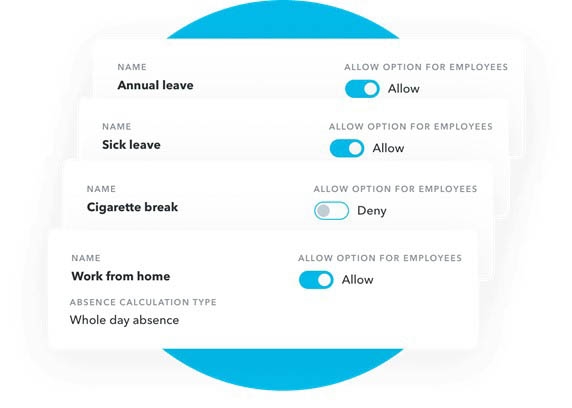
Office vs remote work: How can businesses make a transition into hybrid work more efficient with remote attendance systems
As has pandemic forced many businesses to shift to implement remote work, digital time and attendance tracking are even more essential in making sure businesses are tracking accurately. Technology makes it simple for business owners to keep track of employees’ workdays, ultimately streamlining. Even in the post-pandemic world many workers will remain working remote or at least businesses will implement some kind of hybrid type work which will consist of working partially in the office and partially remote
In the office, it's not too difficult to perceive how workers' time is being spent, and right away get cues when they need support. It's not that simple to monitor that when they're working from home. Managers need to establish remote attendance systems to ensure participation and guarantee work is being completed, deadlines are met to and time isn't being wasted.
A company can benefit from hybrid and remote labor in a variety of ways. To begin with, it is clearly advantageous to employees, as they can save time for commuting. However, it presents a number of difficulties for managers and business owners. Particularly in terms of remote attendance management, which is critical for managing remote personnel in businesses of all sizes, ensuring efficient work, and measuring productivity while working from home. Fortunately, we live in a period where technology and cloud solutions enable businesses to implement remote attendance systems almost off the shelf, without too much technical hassle.
There is no need for a company server, a dedicated IT department, or a security system with a cloud-based attendance tracking system. Installation, infrastructure, and maintenance are usually all included in the price of the product or subscription.
While it might seem time and attendance systems would add to this strain, they help create a more trusting work environment for both sides. Managers know their team is remaining productive, while employees don’t feel they have to prove they aren’t taking advantage of the situation.
What are the benefits for businesses by using remote attendance management systems?
Everything starts with the most important metric that most managers and business owners follow: it improves overall company productivity and adds to performance-oriented culture within the organization.
Alongside the most obvious metric, there are plenty of additional benefits with a successful implementation of an attendance-management system:
- A real-time view of presence at any given time
- Comprehensive workforce management reports
- Improved Payroll processing speed
Most of the advanced solutions nowadays also include leave management features and features for managing remote work. From a practical standpoint, that means your managers can quickly, easily, and transparently manage absences. Not only that, but even employees can request an absence directly from the solution or an app, without sending e-mails to HR or their upline manager. On one side the solution de-loads managers from too many e-mails related to absence, vacations sick leaves etc… And on the other side, it helps workers to have a holistic overview of all their absences. Absence types can be usually completely customized and counted in days or hours as paid or unpaid time, so it’s easy to track work done from home and other types of remote work.

High-level perspective
Aside from attendance/presence tracking, today's solutions offer much more. In order to prepare ahead and avoid being shorthanded because of overbooked vacations, many of the best solutions on the market already provide a calendar view that gives management a bird's-eye perspective of daily presence at work, all absences and planned leave, and even holidays.
In addition, the dashboard of an attendance management system provides managers with the data they need to make informed decisions. Using this information, they can see exactly when and where people are leaving or arriving at work, as well as who is working remotely, who is on a sick leave, etc.
- Use the online or mobile app to see who is present and who is absent.
- Quickly spot late arrivals and early departures
- Always know who is present, working from home, or on the road
How should managers react?
Decision-makers, leaders, and others within the organization responsible for making the transition into hybrid work should consider the following steps:
- Conduct internal assessment; The assessment should consider all the internal needs, industry specifics, nature of work,… That will shine a light on what are your requirements and what your organization should focus on. It's recommended that the organization form a decision team of multiple people who will go through the full process. From research to implementation.
- Decide whether you should go on the cloud or you should use an on-premise solution. Both have their pros and cons, although nowadays in many cases cloud solutions outweigh the other ones.
- Educate yourself and the decision team; Check all available resources (such as spica.com) on what you should be looking for, what features do you need etc. Make sure you do comprehensive research and also make a list of all potential solution providers. Check out some reference stories and case studies of each solution provider. Then select the top 3 solutions.
- Do trials and test out the top 3 solutions; Keep in mind that multiple people in the decision team should be testing out the solutions. It's also recommended that you include some “outsiders” (such as remote workers) into testing as well. Each decision team member should point out the pros and cons of each solution.
- Cross-check everything again and as a team make a unified decision to pick up the winning solution. Make sure outside members (such as IT director, HR Manager, CFO) are part of the final decision process.
- Implement the solution
- Educate, demonstrate and present the new solution to the employees. Make sure your attendance and leave processes are tailored to the new solution and they are designed in the most efficient possible way. Otherway there could be some hiccups on employees' side while using the solution and following the process.
Header image: Pexel








